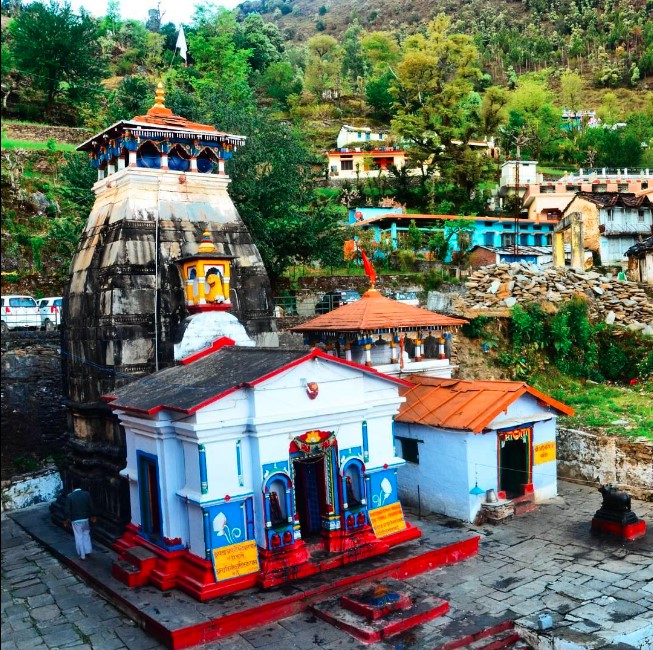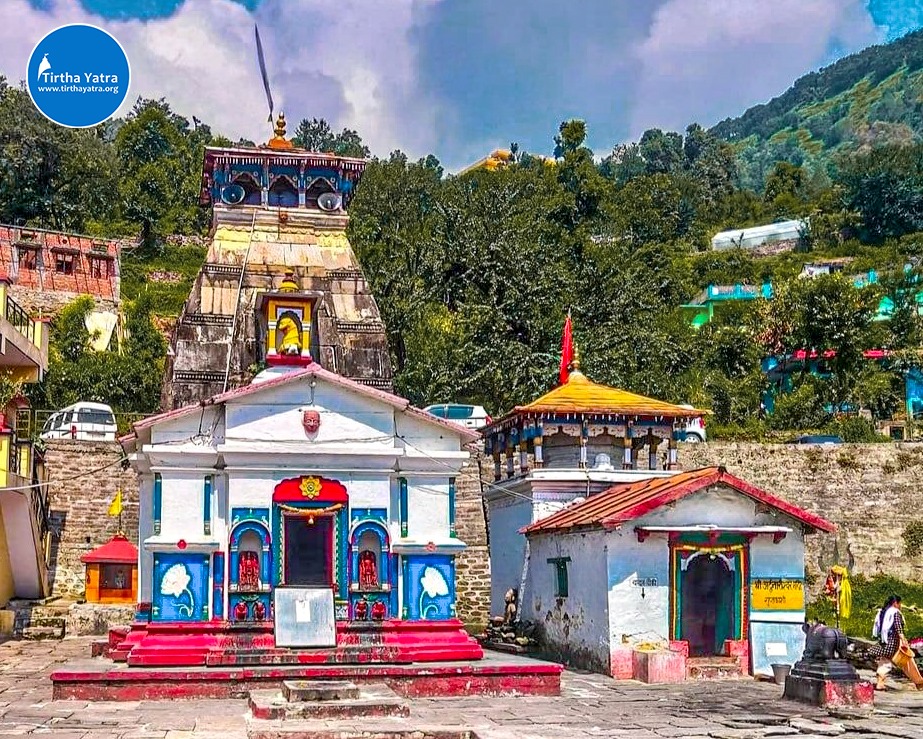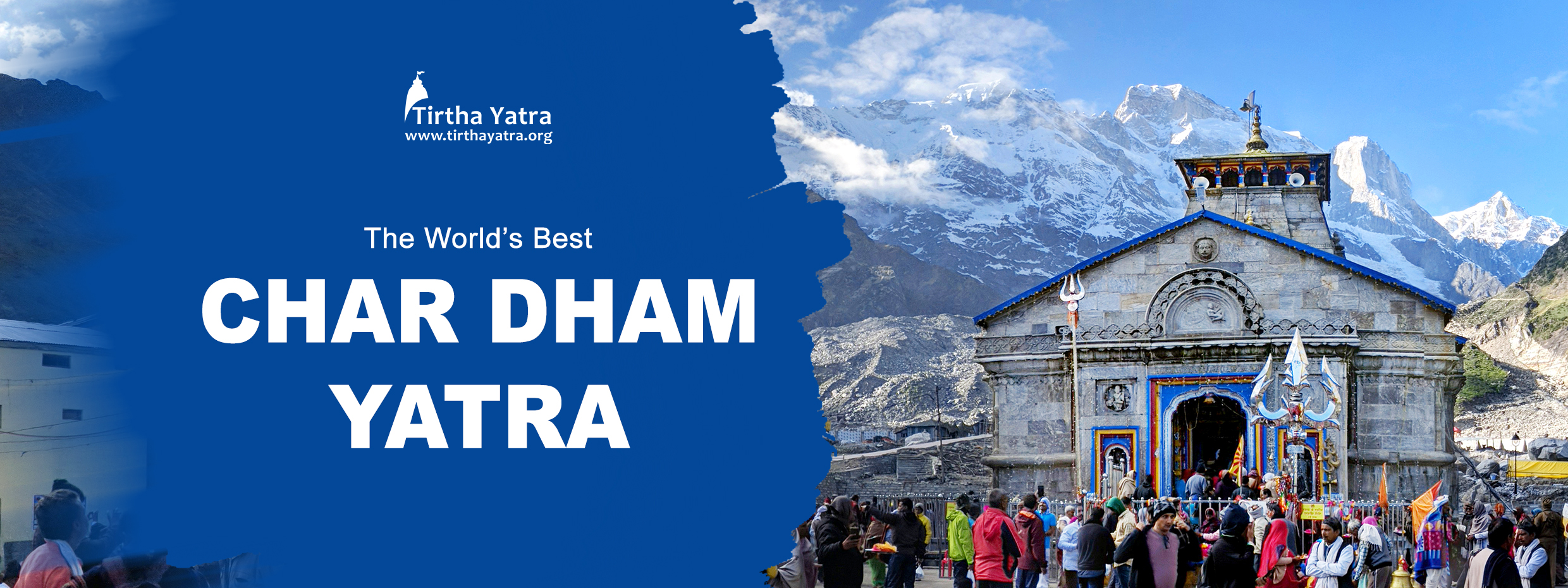
Vishwanath Temple Guptkashi is one of the prominent temples of Kedar Valley of Uttarakhand, which captivates one’s heart by the enchanting scenic beauty of overlooking Chaukhamba mountain raging to an elevation of 7,138 meters. The Vishwanath Temple Guptkashi is a major stop over point for the pilgrims who trek towards the Kedarnath Jyotirlinga. The pilgrims seek the blessings of Bhagawan Vishwanath in Guptkashi temple before ascending to Kedarnath. This temple is a gem of Uttarakhand.
The temple’s location in the Himalayan region adds to its spiritual allure. The devotees who visit Vishwanath Temple Guptkashi find immense spiritual experience falling into a deep sense of peace, and connection with Bhagavan Vishwanatha. The pristine surroundings, with snow–capped peaks and green flowing rivers evoke a sense of awe and reverence for nature’s beauty. The Bhairava upasakas can feel the tremendous intense energy of Lord Bhairava in this temple.
The history of Vishwanath Temple Guptkashi
The name “Gupta Kashi” illustrates as hidden Kashi alluding to its association with Shiva and the Pandavas. The Vishwanath Temple Guptkashi unwinds and steepens into an epic pages of Mahabharata.
After the Kurukshetra warfare, a thunderous victory of dharma over adharma, the Pandavas on the advice of Sri Krishna and the other sages wished to atone for their sins of killing the family members by taking shelter of Shiva. They had also committed a sin of killing a brahmana during the war which they considered very serious. However, Parameshwara Shiva was not willing to meet them since he was annoyed with them for the unjust events of the war.
Shiva avoided meeting them at Kashi and went to Guptkashi thus living there in the guise of a bull, Nandi. Hence the name Guptkashi. Later, Parameshwara Shiva met Pandavas at Kedarnath Dham which is a different history in itself. After establishing the temple at Kedarnath, the Pandavas built the Vishwanath temple to praise and honour Lord Shiva.
The architecture of Vishwanath Temple Guptkashi
The architecture of Vishwanath Temple Guptkashi has a strong historical root which holds a remarkable resemblance to Kedarnath temple. It is stone carved having an elevated vimana over the sanctum and a slanting wooden roof akin to the architectural style of the Himalayan region. If one keenly observes, on the top of the door one can see a magnificent painting of Bhairava, a fierce manifestation of Shiva.
The exterior facade of the temple is colorfully painted. If you twitch your eyesight towards the left side of the shrine you can see a shrine dedicated to Ardhanarishwara a combination of Shiva and Devi Parvathi. Entering the temple, a large Nandi has been installed in a sitting posture showing in the ardha mantapa exhibiting his commitment of selfless devotion towards Lord Shiva.
In front of the temple there is a small pond always filled with the waters of Ganga & Yamuna, flowing instantaneously from the mountains. The beautiful pond made out of stone represents Manikarnika Ghat of main Kashi in Uttar Pradesh.
The Temple timings of Vishwanath Temple Guptkashi
The temple is opened all-round the year unlike the Kedarnath Temple.
The darshan timings are morning 05:00 am to night 08:00 pm.
In between the temple is closed for the afternoon naivedya and evening alankara.
Festivals of Vishwanath Temple Guptkashi
The temple is a hub of activity, especially during the religious festivals. Mahashivarathri celebrations sees a surge in the number of visitors. Devotees come from far and wide to offer prayers, perform rituals, and partake in the vibrant celebrations that include singing bhajans and participating in various cultural events. Festivals like Holi, Dev Dipawali, Dipawali, religious gatherings like Mela, local Deities visit, etc are to be noted for their iconic celebrations. The temple also becomes the centre of celebrations during the opening and closing dates of Kedarnath Temple.
The daily rituals at the temple are a spectacle in themselves. The priest performs elaborate pujas every day. Pradosha Puja on the Pradosha day is not to be missed.
How to reach Vishwanath Temple Guptkashi?
To experience this temple in its full potential, travel with Tirtha Yatra on its world’s best Char Dham Yatra. Everything will be taken care and you need not worry about any arrangements be it transport / accommodation / pujas at the temple. Below are the ways to reach Guptkashi if you wish to explore it on your own.
By Air – The nearest airport to Guptkashi is Jolly Grant Airprot in Dehradun. From the Airport taxis can be hired to reach the Vishwanath Temple Guptkashi.
By Rail – The nearest railway station to Guptkashi is Haridwar or Rishikesh. From Haridwar or Rishikesh one must travel via road. Regular buses are available from the bus stand in both of these cities.
By Road – From Haridwar or Rishikesh, taxis can be hired to reach Guptkashi. One can also hire local jeeps / buses to reach Vishwanath Temple Guptkashi.
Nearby places to visit
While planning to have darshan at Vishwanath Temple Guptkashi, devotees can plan to visit the following nearby destinations.
- Kedarnath Temple: Although it goes without saying that devotees visiting Guptkashi are the ones who visit Kedarnath Temple. Nonetheless this temple should not be missed. Read more about the Kedarnath Temple
- Narayankoti: Narayankoti is historically significant as a revered pilgrimage site linked to Mahabharata where Lord Krishna showed His one crore forms. There is an ancient group of temples featuring the Lakshmi Narayana Temple and the temples dedicated for Navagrahas.
- Kalimath: Kalimath temple is historically significant as a major shaktipeetha dedicated to Kali Devi, believed to be a site where the goddess’ energies are concentrated. It is a perfect place for Kali Upasakas. The distance between Kalimath and Guptkashi is approximately. She is revered as the consort of Sri Kedarnath. Read more about the mystery of Kali Shila
- Ukhimath: Ukhimath is a beautiful village. During winter, the utsava vigrahas from Kedarnath, Tungnath and Madhya Maheshwar temples are brought to Ukhimath for worship. This is the wedding spot of Usha (daughter of Banasura) and Aniruddha (Grandson of Krishna).
- Triyuginarayan: Triyugi Narayan is a village where the wedding of Lord Shiva and Parvati Devi took place. The marriage took place in front of Lord Vishnu therefore Triyuginarayan temple was built in His honor. It is really a beautiful spot to visit. Read in detail about Triyuginarayan Temple













Leave a Reply